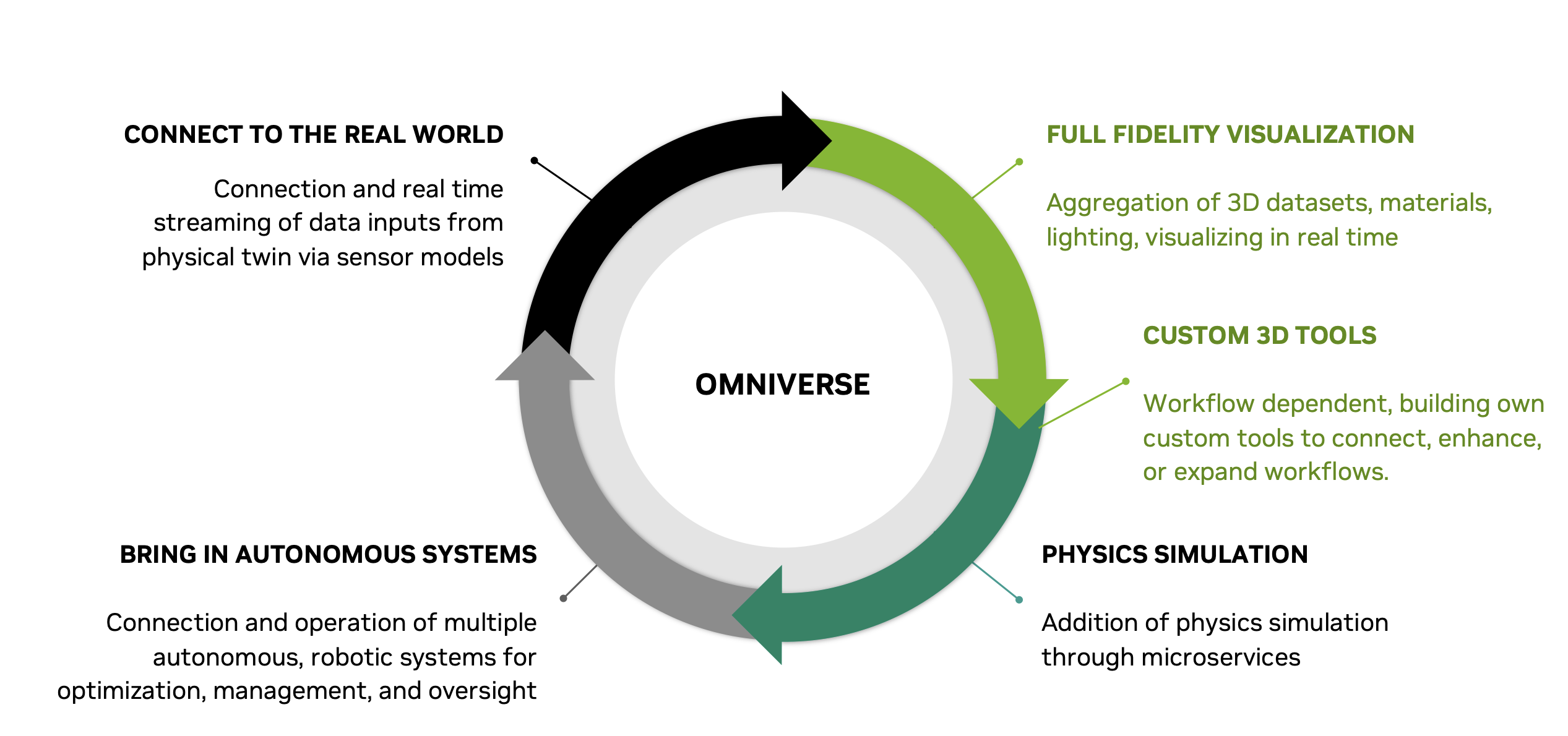Building Warehouse Digital Twins with NVIDIA Omniverse
Regardless of your industry, use case, or organizational capabilities, the creation of large-scale digital twins can be broken down into four critical components:

Full Fidelity Visualization & Custom 3D Tools:
Data Pipelines and workflows are established
3D models and datasets are ingested, aggregated, and normalized into USD while retaining a link to the source data
3D models, data, and workflows are customized and optimized
Materials, lighting, textures, and rendering are added to 3D models to enable full-design-fidelity visualization
3D models act as a single source of truth and are continuously shared with, collaborated on, and refined by contributors and key stakeholders in real time
Physics Simulation:
Sensors are simulated
Physics simulations are applied to 3D models and environments
Results from domain specific solvers are visualized and brought to life
Using AI, physics can be predicted in real time with high accuracy and fidelity.
Connect & Train Autonomous Systems:
Robotics models are brought in.
Synthetic data pipelines are created
The digital twin and generated synthetic data are leveraged to train, test, and optimize autonomous systems, including robots and perception systems, for scenarios that are impractical or impossible in the real world.
Connect to the Real World:
Digital twins are connected to real-world systems and live data streams via IoT sensors and PLC
Physical systems and digital twins are monitored and optimized in real-time
Building Warehouse Digital Twins with NVIDIA Omniverse